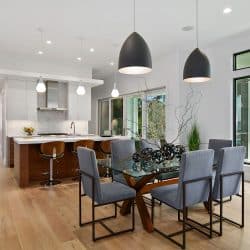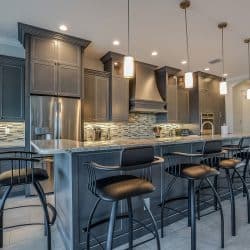Choosing rugs for your room can be an exciting part of the decorating process. However, it can also be overwhelming. A popular question is whether your rug in your living room and dining room should match. Well, we've researched the topic in depth and have the answer for you!
Your rugs in your living room and dining room do not have to match. However, they can, and this can be a simple way to create a consistent look throughout your home. However, it is not necessary.
Whether you decide to match your rugs may also depend on the layout of your home and whether they can ever be seen at the same time. Even then, they don't have to be exactly the same, but to be cohesive, they should complement each other.
Now you know that your dining room and living room rugs do not have to match. Still, you should keep reading as we elaborate on this further. We will provide some image examples for you to compare and go over some other questions you might have about the placement of rugs in your home. Without further ado, let's get into it.

Matching or Mismatching Your Dining Room and Living Room Rugs
As we mentioned above, whether you choose to match your rugs is ultimately up to you. There are reasons you may want to and there are reasons you may not. However, the layout of your home can play a large part in this decision.
Typically, if you have an open floor plan or your dining room is directly off your living room, your rugs should at the very least complement each other.
If you have a closed floor plan or the dining room is located completely separate from your living room, your rugs can be completely different since they may not affect the design scheme of the other.
Matching the Rugs
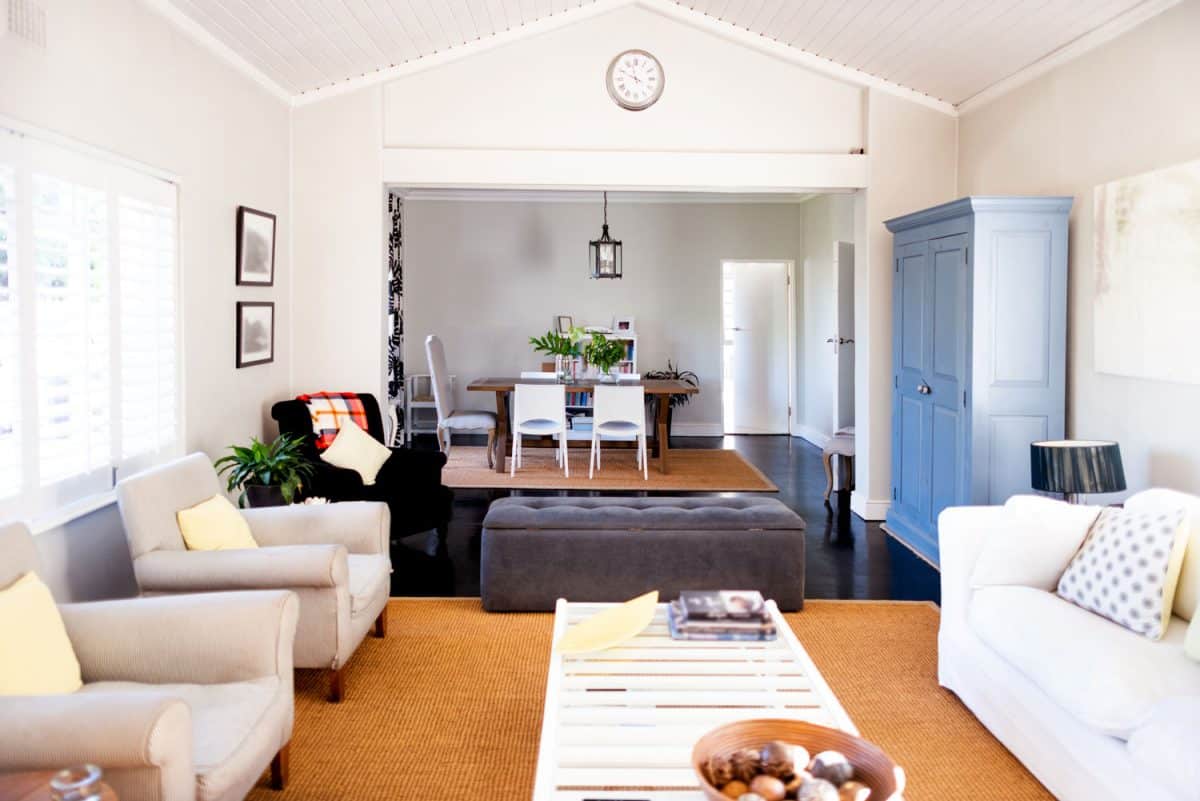
Here's an example where both the living room and dining room rugs are the same. As you can see, the design scheme is the same throughout, with lots of neutral and earthy colors. Matching the rugs will help tie the entire look together.
This look works particularly well because the rooms are not decorated exactly the same in other ways. For example, even though the rugs match, the rest of the furniture and decor simply complement each other. Using a variety of textures and colors creates a more relaxed overall look.
Complementing Rugs
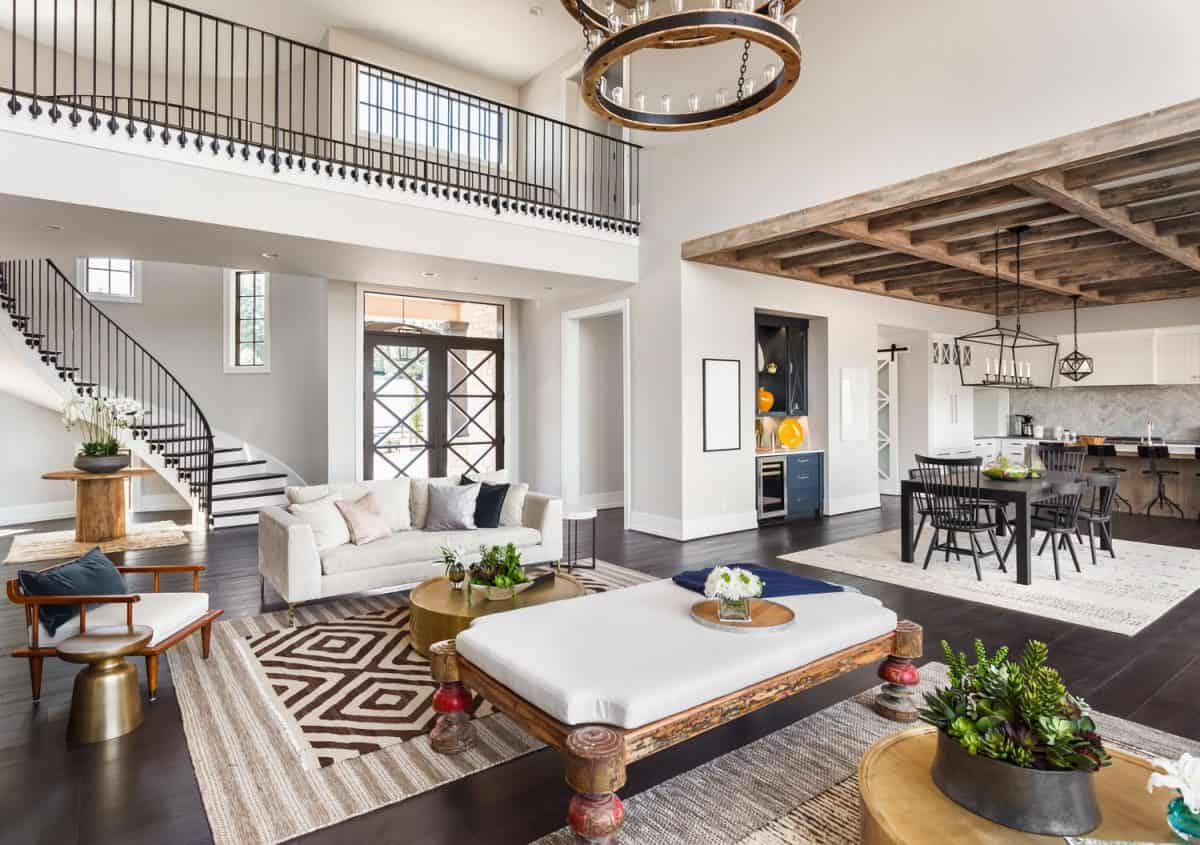
If you want the rooms to match but you don't like the idea of both rugs being the same, you can complement them instead. This means choosing rugs that are different from each other but will still pair well together.
For example, you can choose two rugs from the same color palette. You can also have them complement each other by texture, or you can have them match other decor pieces in your room. This room has three different rugs, but they all share similar boho color palettes, and this makes them work well in the space.
Click here to see this boho area rug on Amazon.
Mismatched Rugs
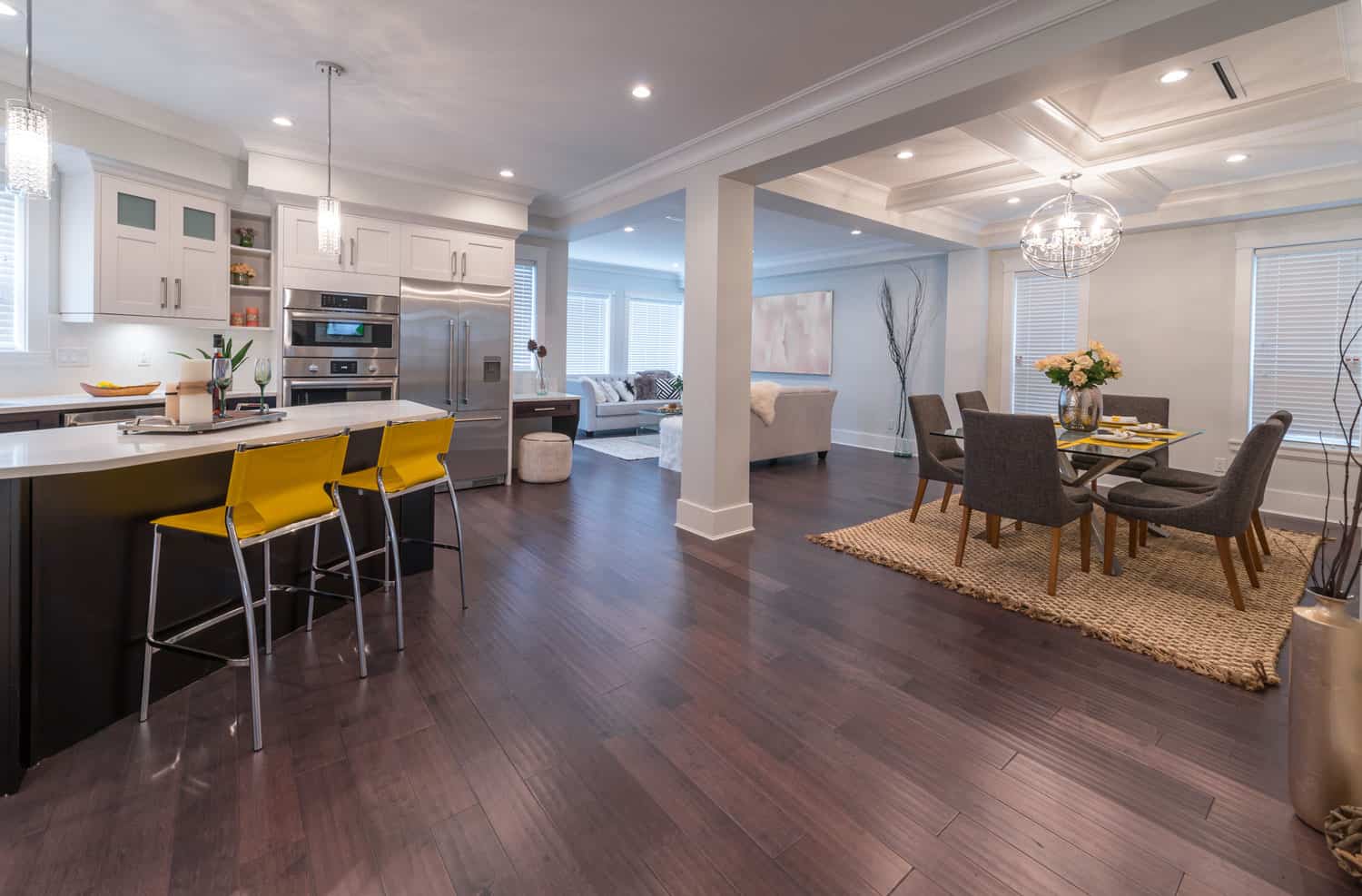
Your final option is to not match or complement the rugs at all. This typically works best in homes that do not have an open floor plan. However, if you take a look at the example above, this home has completely different styles for both the living and dining rooms and it still looks great.
The living room is light and airy with a white rug, while the dining room is full of texture with a jute-style rug. By adding yellow chairs to the breakfast bar and white cabinets for the kitchen, this designer manages to tie the entire design together by using the kitchen as a complement to the two rooms.
Click here to see this jute area rug on Amazon.
Does the dining room need a rug?
You do not have to put a rug in your dining room. However, there are a number of reasons you might choose to.
If your dining room is already carpeted, you may want to add a rug to help protect the carpet from any spills or messes. A rug can also help protect hardwood floors from chair scuff marks as people scoot chairs around.
You may also choose to add a rug for aesthetic purposes. A dining set can look lonely or out of place in an otherwise empty space, but adding a rug is a great way to create boundaries, especially in homes with an open floor plan. It can help clearly define a space, and this is true for a living room area, too.
Dining Rooms With A Rug
You've already seen a couple of examples of a dining room with a rug, but here are a few more to check out.
Rug Over Carpet
Here's an example of the situation we mentioned above. If your dining room already has carpet, it might be a good idea to protect it by adding an area rug. It's much easier to change out a stained area rug than stained carpeting.
Creating Boundaries
Here's the other example we gave for why you might want to use a rug in your dining room. Without the use of rugs in this space, it might have been difficult to identify where each area begins and ends. It can also help protect the beautiful flooring from furniture marks.
Dining Rooms Without A Rug
There are also reasons you might not want a rug in your dining room. If you have tile, hardwood, or laminate flooring, it's much easier to clean up than carpet, so if you've got a particularly messy eater in your home, it might make sense to forgo the rug.
Bare Floor

A rug isn't necessary for this dining room. Even though the home does have an open floor concept, the dining space is defined by extravagant shelving and lighting fixtures instead. This allows the owner to show off the tiled floor and have an easy cleanup should any spills occur.
How big should a rug be under a dining table?
A dining room rug should extend a foot outside of the dining table and chair setup. So the easiest way to figure out how big of a rug you will need is to grab a tape measure and figure out the dimensions of your table.
If you don't feel like measuring, you could just opt for a larger-sized rug depending on how many seats your dining room table has.
For example, if your table sits 6 or more people, you'll likely need a rug of at least 9' x 12'. Obviously, if you have a small dining table that sits fewer people, you could probably use a smaller size.
Can you use the same area rug in different rooms?
You can use the same area rug in different rooms. There are a number of reasons you might choose to use the same rug in different areas of your home. Maybe you just really like the design and the quality, or maybe you want to use it to make your entire design cohesive. Either way, it is perfectly okay to do!
Can you put two different rugs in the same room?
Putting two different rugs in the same room is also okay. Generally, if you decide to do this, it's a good idea to at least have the rugs complement each other or the rest of the room in order for it to be a cohesive design scheme.
However, if you scroll back up, you can see examples of two very different rugs in the same room and two different but complementary rugs in the same room.
As we mentioned earlier, the great thing about interior design is that you are free to decorate your home however YOU desire. At the end of the day, it's your space and you will be the one seeing it consistently.
Choose a design that makes you happy. If you like mismatching textures, colors, and design schemes, then by all means do so!
Final Thoughts
Whether you choose to match your living room and dining room rug is completely up to you, and by now, you should feel more confident in whichever choice you make.
Hopefully, our article, with the provided image examples, has proven to you that you really can't go wrong either way. Don't get too stressed about choosing rugs; instead, try to enjoy the process and pick the rugs you really love!
For more reading on the topic of interior design throughout your house, take a look at some of our other blog posts:
Should The Kitchen Floor Match The Rest Of The House?
Should The Dining Table Match The Kitchen Cabinets?




